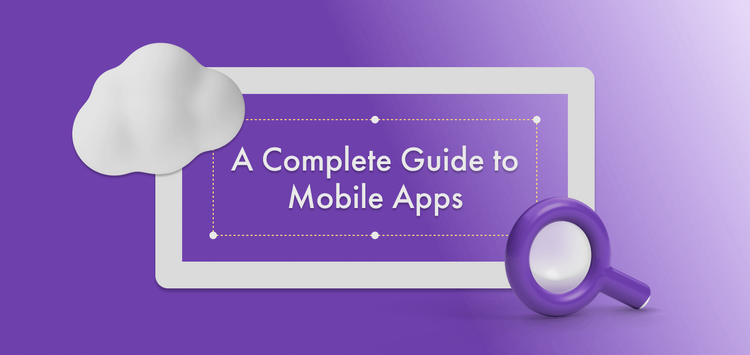Modern mobile app development requires specialist and unique technical skills. To get to a minimum viable product (MVP) with a codebase that still warrants further development r...



EMPOWERING THE STARTUP ECOSYSTEM






Why Founders, CEOs and CTOs love Pangea.ai
Talent quality
Rigorous vetting to select top 7%
Speed
Hire, or augment a team in 72h
Flexibility
Scale up and down, on-demand
"Our engagement with Pangea.ai has significantly helped us improve the delivery quality of our innovations."
Pete Becker
Innovation Product Management Lead
"We worked with the Pangea.ai team to identify a mobile engineering partner to help with our iHeartRadio for auto roadmap."
Tom Drapeau
VP Engineering
"Working with Pangea.ai was great. They made sense out of a complicated and fragmented market and we were able to find a good fit for our needs."
Cordel Robbin-Coker
Co-Founder and CEO
"Pangea.ai helped us with their very clear and structured selection process to find our perfect partners for our product in just a few steps."
Reiner Neusser
CEO
"Pangea.ai connected us to various experts around the world."
Ayne Santiago
Senior Lead Software Engineer
"The team at Pangea.ai helped us meet and engage with a high quality shortlist enabling us to spend our time building a relationship."
Phillip Mundy
Founder
"Pangea.ai is a wonderful partner for any early stage startups like us who are eager for top engineers to accelerate our product roadmap."
Jeff Hu
Founding Engineer
"Pangea.ai offers a fantastic service for high growth businesses such as ourselves. Their expertise saved us a significant amount of time and risk."
Paul Skidmore
Product Lead
"Working with Pangea.ai was an awesome and pleasant experience. We got exactly what we wanted and more."
Javy Olives
Enterprise Product Head
"The Pangea.ai team is professional and effective. Pangea's offering of top talent delivers."
Raymond Spoljaric
CEO
YOU MAY HAVE SEEN US BEFORE
















HOW IT WORKS
We match you to the right team.
Not all agencies are right for all jobs.
Be Instantly Matched
Instantly receive a shortlist of suitable talent and agencies based on your re...
Book Your Interviews
Book interviews, chat with agencies, and review proposals directly on Pangea.a...
Review Proposals & Hire
Easily review and compare talent profiles and project proposals to make the mo...

FAQs
How do we ensure that Mobile Apps agencies are deeply vetted and top 7% on Pangea.ai?
To select the top percentile of Mobile Apps agencies, our proprietary due diligence consists of a rigorous 5-step process: pre-qualification, organizational mapping, client reviews, team health assessment, and acceptance. Only the top 7% of agencies complete the process successfully. Once accepted, ongoing efforts to ensure continued excellence and standing within the community begin. This is achieved by consistently demonstrating excellence in their work and continued commitment to due diligence efforts by Pangea.ai.
How do we guarantee to match best-fit Mobile Apps agencies within 72 hours through Pangea.ai?
Once you share your requirements, the brief is shared with our community of 150+ agencies (without any personal identifiable information). Said agencies have 48 hours to apply to your brief, and you can access each brief on our platform. Using a combination of AI and human expertise, our system matches and connects you with the 3 most suitable Mobile Apps agencies from the application pool. As a result, we can always guarantee delivery within 72 hours—ensuring the most efficient process for connecting with the right agencies for any requirements.
How do we match you to a fully-managed agency team or a single Mobile Apps engineer?
When matching fully-managed agency teams, we prioritize their expertise in the following order:
- Product Domain: What is being built?
- Industry: What industry is it being built in?
- Services: What are the services required?
- Roles: What is the ideal team structure?
- Tech Stack: What technology is required?
When matching for a specific agency role, we prioritize talent expertise in the following order:
- Roles: Who is being hired?
- Tech Stack: Which technology is required for the role?
- Product Domain: Is domain know-how required for the role?
- Industry: Is industry know-how required for the role?
- Services: Does the role have to provide any services?
Additionally, we consider rates and location preference, budget indication, kick-off timeline, and other relevant factors to curate the best-match agencies for both engagement models.
Where are the Mobile Apps agencies from Pangea.ai located, and what are the rates?
Countries such as Uruguay, Brazil, Poland, Crotia, Portugal, Poland, and similar are home to high-quality talent clusters in software development. The vetted agency community at Pangea.ai reflects said notion, with our agency partners being located in Latin America and Europe. The rates depend on location, country, skills, and seniority required, but the average hourly rate is between $40-80 which is an average daily rate of $320-640.
Why is Pangea.ai a free service for businesses hiring Mobile Apps agencies or talent?
Pangea.ai is a free service for businesses as we are compensated an annual membership fee for continuous due diligence by the agency partners and a % of their sales and marketing spend.
Getting started is easy
Join hundreds of Founders, CEOs and CTOs using Pangea.ai every day to find and hire their perfect software partner. Start reviewing shortlisted agencies from our community today.
Have a question? Schedule a call
Have a question? Schedule a call








